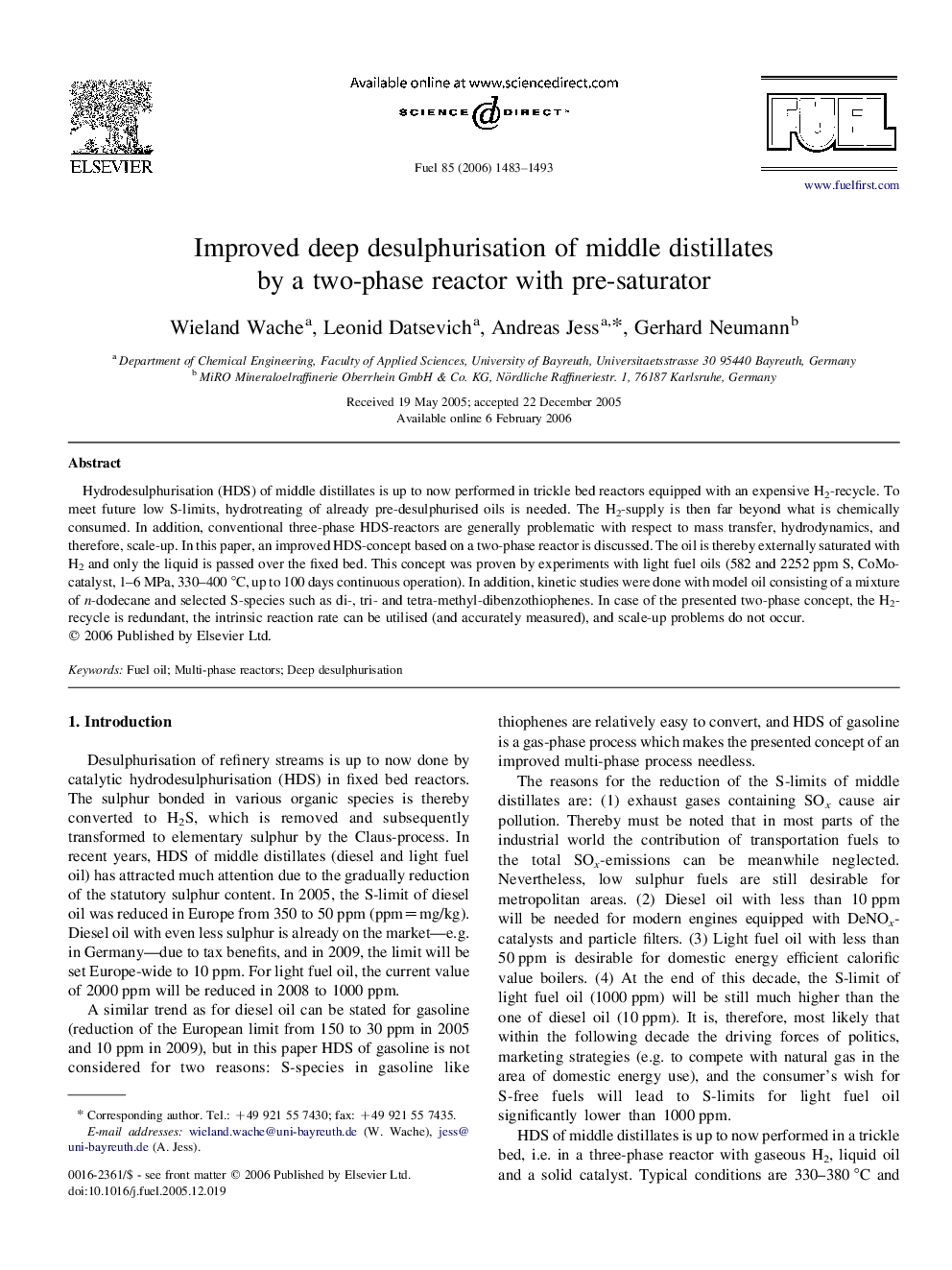| Article ID | Journal | Published Year | Pages | File Type |
|---|---|---|---|---|
| 208567 | Fuel | 2006 | 11 Pages |
Hydrodesulphurisation (HDS) of middle distillates is up to now performed in trickle bed reactors equipped with an expensive H2-recycle. To meet future low S-limits, hydrotreating of already pre-desulphurised oils is needed. The H2-supply is then far beyond what is chemically consumed. In addition, conventional three-phase HDS-reactors are generally problematic with respect to mass transfer, hydrodynamics, and therefore, scale-up. In this paper, an improved HDS-concept based on a two-phase reactor is discussed. The oil is thereby externally saturated with H2 and only the liquid is passed over the fixed bed. This concept was proven by experiments with light fuel oils (582 and 2252 ppm S, CoMo-catalyst, 1–6 MPa, 330–400 °C, up to 100 days continuous operation). In addition, kinetic studies were done with model oil consisting of a mixture of n-dodecane and selected S-species such as di-, tri- and tetra-methyl-dibenzothiophenes. In case of the presented two-phase concept, the H2-recycle is redundant, the intrinsic reaction rate can be utilised (and accurately measured), and scale-up problems do not occur.
